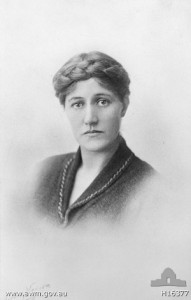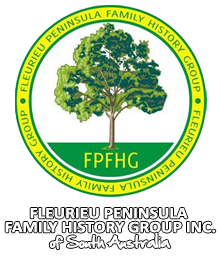WWI Units in which they Served
The men, the units, and the service they saw…
10th Battalion Australian Imperial Forces (Infantry)
At 4:30am on 25 April 1915, the 10th Battalion from South Australia, landed on Gallipoli.
Sunday 25 April 1915
Between 4.30am and 4.45am the 3rd Australian Brigade consisting of the 9th (Queensland), 10th (South Australia), 11th (Western Australia) and 12th (Tasmania, with some South Australia and Western Australia) Battalions and the 3rd Field Ambulance – landed on Gallipoli around Ari Burnu point. The rest of the Anzac corps came ashore throughout the day. By the evening, despite strong Turkish counter-attacks, the Anzacs held a narrow triangle of land roughly 2 kilometres long at its base on the coast and extending to just under a kilometre inland at its widest. There were 950 men on landing, and within five days there had been 466 casualties. These men spent the next month defending Shrapnel Gully.
There were 950 men of the 10th Battalion who landed there that day. Two of those died on the first day of engagement at Anzac Cove. They were Private Harold Osborne Mansfield, aged 24, who had been born at Goolwa; and Private Patrick Thomas Pyne, aged 19 from Strathalbyn.
On the morning of 19 May, during what became known as the Great Turkish Counter-Attack, twelve more of their number were killed. Ten of those men lie buried now, in the Shrapnel Gully Cemetery (Plot III, Row D). [Information courtesy Australian War Memorial]
Light Horse Training Regiments
Unlike British Mounted Units, the Australian Light Horse Regiments were not cavalry units but rather Mounted Infantry.
Egypt
3rd Light Horse Regiment (Mounted)
Members of the 3rd Light Horse Regiment, 1st Light Horse, Australian Imperial Forces served with distinction at Gallipoli as infantrymen. Those who survived went back to Romani and other locations in Egypt and on to other theatres of war where they served as Mounted Infantrymen.
Anzac, Defence of Anzac, Suvla, Sari Bair, Gallipoli 1915, Romani, Maghdaba-Rafah, Egypt 1915 – 17, Gaza-Beersheba, El Mughar, Nebi Samwil, Jerusalem, Jaffa, Jericho, Jordan (Es Salt), Jordan (Amman), Megiddo, Nablus, Palestine 1917 – 18
Egypt, Gallipoli, Western Desert, Sinai, Palestine
9th Light Horse Regiment (Mounted)
There were quite a number of Fleurieu men and boys in the 9th Light Horse. Their commanding officer, Lt Col Carew Reynell was born and raised at Reynella and owned a considerable size chunk of the area.
Anzac, Defence of Anzac, Suvla, Sari Bair, Gallipoli 1915, Romani, Maghdaba-Rafah, Egypt 1915 – 17, Gaza-Beersheba, El Mughar, Nebi Samwil, Jerusalem, Jordan (Es Salt), Megiddo, Sharon, Damascus, Palestine 1917 – 18
Egypt, Gallipoli, Sinai, Palestine
Vetinary Units
Egypt, Western Front
Ammunition and Supply Units
All theatres of war.
Camel Corps (Mounted Unites)
Sinai, Egypt.
Field Ambulance Units (Medical)
All theatres of war
3rd General Hospital (Medical)
England, Gallipoli, Egypt, Western Front
12th Battalion Australian Imperial Forces (Infantry)
Landing at Anzac, Anzac, Defence of Anzac, Suvla, Sari Bair, Gallipoli 1915, Egypt 1915-16, Somme 1916 – 18, Pozieres, Bullecourt, Ypres 1917, Menin Road, Broodeseinde, Polygon Wood, Poelcappelle, Passchendaele, Lys, Hazebrouck, Amiens, Albert 1918, Hindenburg Line, Epehy, France and Flanders 1916 – 18
Egypt, Gallipoli, Western Front.
16th Battalion Australian Imperial Forces (Infantry)
Landing at Anzac, Anzac, Defence of Anzac, Suvla, Sari Bair, Gallipoli 1915, Egypt 1915 – 16, Somme 1916 – 18, Pozieres, Bullecourt, Messines 1917, Ypres 1917, Menin Road, Polygon Wood, Passchendaele, Arras 1918, Ancre 1918, Hamel, Amiens, Albert 1918, Hindenburg Line, Epehy, France and Flanders 1916 – 18
Egypt, Gallipoli, Western Front.
32nd Battalion Australian Imperial Forces (Infantry)
Egypt 1915-16, Somme 1916-18, Bapaume 1917, Bullecourt, Ypres 1917, Menin Road, Polygon Wood, Poelcappelle, Passchendaele, Ancre 1918, Amiens, Albert 1918, Mont St Quentin, Hindenburg Line, St Quentin Canal, France and Flanders 1916-18
Egypt, Western Front
48th Battalion Australian Imperial Forces (Infantry)
Egypt 1916, Somme 1916 – 18, Pozieres, Bullecourt, Messines 1917, Ypres 1917, Menin Road, Polygon Wood, Passchendaele, Arras 1918, Ancre 1918, Amiens, Albert 1918, St Quentin Canal, Hindenburg Line, Epehy, France and Flanders 1916 – 18
Egypt, Western Front
50th Battalion Australian Imperial Forces (Infantry)
Egypt, Western Front
Artillery Batteries
All theatres of war
How many served?
From South Australia, some 34,959 men aged between 18 and 44 (on average) enlisted to fight during World War I. This figure equates to approximately 8% of the total population of the state at the time. Of those almost 35 thousand men, around 12% of them came from the Fleurieu Peninsula or had some connection to it, either by birth or residence. And of that 12% who enlisted, from the Fleurieu, over 300 of them didn’t make it home, but lie buried but not forgotten beneath the sod of foreign lands.
Of all the Australians who embarked for overseas – 331,781 men, women and boys – some 215,585 were either killed or wounded. That is a staggering 64.98% of those who answered the call.
Monthly Count of Enlistments in South Australia
Each * represents a Fleurieu serviceman who was killed in action, died of wounds or illness between 1914 and 1918. The asterisks are placed in the month in which they enlisted.
| YEAR | JAN | FEB | MAR | APR | MAY | JUN | JULY | AUG | SEP | OCT | NOV | DEC | |
|---|---|---|---|---|---|---|---|---|---|---|---|---|---|
| 1914 | (1) | (1) | (1) | 2012 (16) | 921 (14) | 921 (14) | 658 (6) | 728 (8) |
|||||
| 1915 | 1364 (3) | 594 (4) | 658 (7) | 360 (5) | 1062 (3) | 1394 (9) | 1453 (18) | 2705 (22) | 1651 (15) | 1020 (7) | 607 | 729 (2) |
|
| 1916 | 1981 (5) | 1386 (11) | 1011 (13) | 890 (13) | 870 (7) | 430 (6) | 469 (4) | 690 (8) | 1009 (1) | 938 (10) | 182 (4) | 187 (2) |
|
| 1917 | 353 | 502 (1) | 505 (1) | 406 (1) | 401 | 358 (1) | 379 (2) | 415 | 278 | 251 (1) | 234 | 216 | |
| 1918 | 134 | 159 | 142 | 206 | 405 | 212 | 179 | 206 | 176 | 288 | 105 |
What the women did to help?

While the men were away fighting, the women at home set about raising money and providing and distributing comforts free of charge to the Australian fighting men in all the battle zones. At the beginning of the war, each state had several such funds. In South Australia, we had the League of Loyal Women, which had been started by Mrs Reynell, wife of Lieutenant Colonel Carew Reynell, commanding officer of the 9th Light Horse.
By 1916, the numerous patriotic funds had been banded together as one to form the Australian Comforts Fund. The fund ceased to operate in 1920 but was revived in June 1940 during WWII and finally disbanded in 1946. The women of the Australian Comforts Fund, and of it’s State level predecessors conducted much of their distribution activities in the field, and most of them held honorary officer ranks in either the Army or Air Force.
Mrs Marion May Reynell (nee Byard, daughter of Douglas John Byard, head of the Hahndorf Academy) served the soldiers at the front from a tea house at her own expense at Heliopolis in Egypt, serving tea and other comforts to the men of the AIF Light Horse. She was also the instigating force behind another of the early South Australian patriotic funds, the Battalion Clubs. She was still dispensing tea and good cheer for some time after her husband was killed in action on Hill 60 on the Gallipoli Peninsula on 27 August 1915. Her brother was also serving at Gallipoli at the same time as she and her husband.
During the time that the Patriotic Funds were in operation prior to their amalgamation into the Australian Comforts Fund, a great amount of money was raised to provide the comforts of home to the fighting men at the front. The following table shows the 1914 population of each State and the amounts raised by each State, with a breakdown of the average per person donated. Take note of which State gave the most per person.
Pictured Right: – Mrs Marion May Reynell, wife of Lieutenant Colonel Carew Reynell, 9th Light Horse and founder of both the League of Loyal Women and the Battalion Clubs [Australian War Memorial]
|
State |
1914 Population | Amount Raised | Approximate Donation Per Person |
| New South Wales | 1,861,522 | £4,911,453 | £2/10/- |
| Victoria | 1,430,667 | £3,294,273 | £2/6/- |
| Queensland | 676,707 | £2,302,970 | £3/8/- |
| South Australia | 441,690 | £1,794,248 | £4/1/6 |
| Western Australia | 323,018 | £1,188,650 | £5/10/- |
| Tasmania | 201,416 | £310,707 | £1/10/6 |
